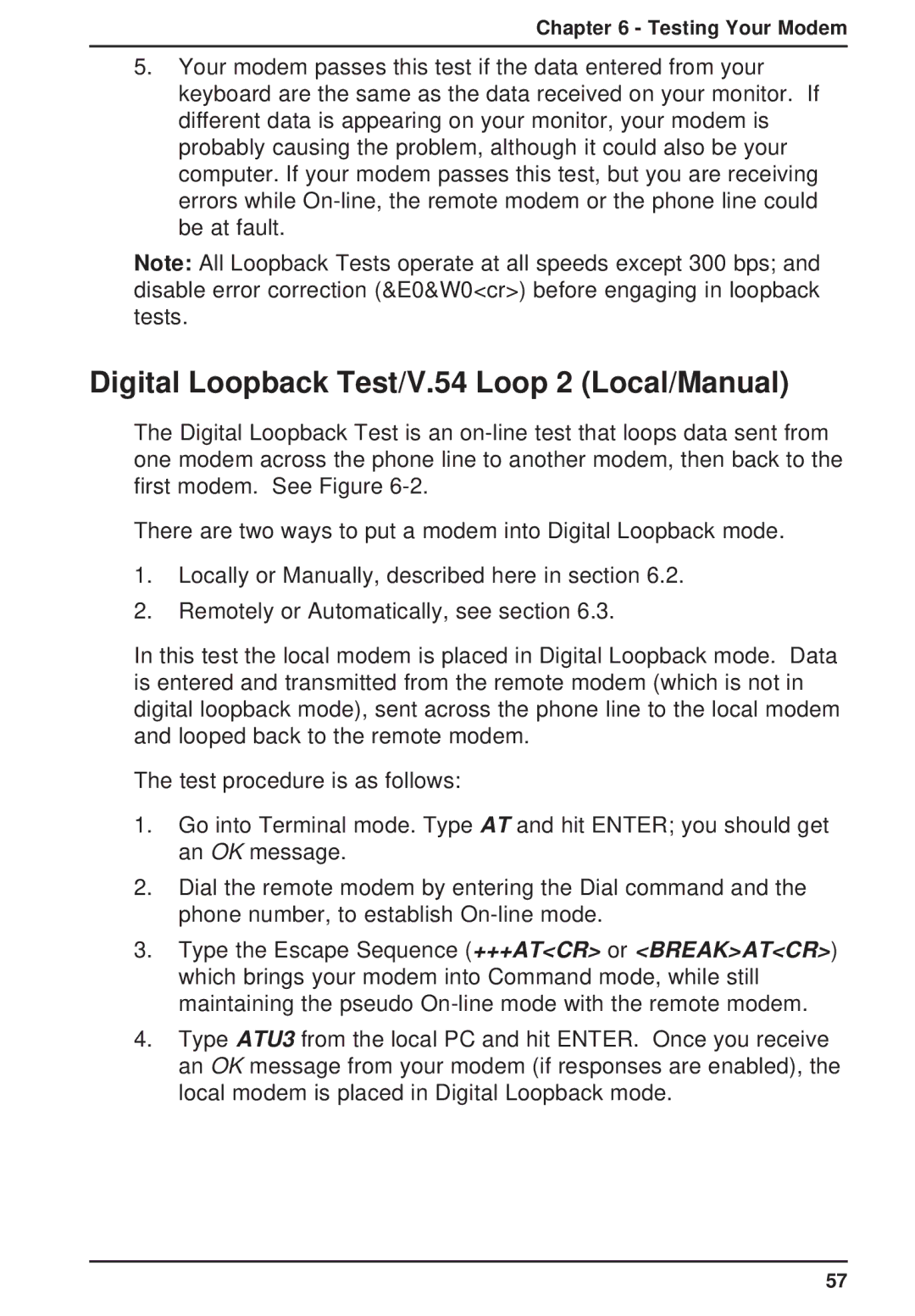
Chapter 6 - Testing Your Modem
5.Your modem passes this test if the data entered from your keyboard are the same as the data received on your monitor. If different data is appearing on your monitor, your modem is probably causing the problem, although it could also be your computer. If your modem passes this test, but you are receiving errors while
Note: All Loopback Tests operate at all speeds except 300 bps; and disable error correction (&E0&W0<cr>) before engaging in loopback tests.
Digital Loopback Test/V.54 Loop 2 (Local/Manual)
The Digital Loopback Test is an
There are two ways to put a modem into Digital Loopback mode.
1.Locally or Manually, described here in section 6.2.
2.Remotely or Automatically, see section 6.3.
In this test the local modem is placed in Digital Loopback mode. Data is entered and transmitted from the remote modem (which is not in digital loopback mode), sent across the phone line to the local modem and looped back to the remote modem.
The test procedure is as follows:
1.Go into Terminal mode. Type AT and hit ENTER; you should get an OK message.
2.Dial the remote modem by entering the Dial command and the phone number, to establish
3.Type the Escape Sequence (+++AT<CR> or <BREAK>AT<CR>) which brings your modem into Command mode, while still maintaining the pseudo
4.Type ATU3 from the local PC and hit ENTER. Once you receive an OK message from your modem (if responses are enabled), the local modem is placed in Digital Loopback mode.
57
